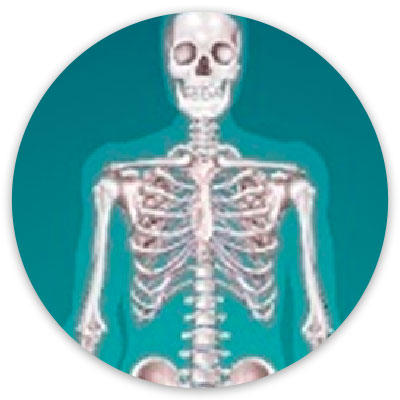Stean Education and the Design of Learning Models MOE, TAS and COM
DOI:
https://doi.org/10.24310/Idiseno.2022.v17i.15683Keywords:
Steam education, Virtual Learning Models, DESIGN, MOE, TAS, COM, MOE TAS E COMAbstract
This work attempts to establish a dialogue between aspects of the STEAM Education concept and the design of virtual learning models MOE, TAS and COM. These models were developed for the teaching of Human Anatomy in the Dance Degree Course at the Federal University of Minas Gerais/Brazil. In this study, a literature review on STEAM Education was carried out to identify its most characteristic aspects - such as interdisciplinarity, problem solving and decision making, collaborative work and the innovative aspect - in order to relate to the process of design corresponding to the models. In this sense, it is important to highlight the relationships between the intended teaching, the choice of audiovisual elements and the collaborative possibilities and needs between the different areas.
Downloads
Metrics
Publication Facts
Reviewer profiles N/A
Author statements
Indexed in
-
—
- Academic society
- N/A
- Publisher
- Universidad de Málaga
References
Bacich, L. y Holanda, L. (2020) STEAM: integrando as áreas para desenvolver competências. In: Bacich, L. y L. Holanda. (orgs.). STEAM em sala de aula: a aprendizagem baseada em projetos integrando conhecimentos na educação básica (pp. 12-22). Puerto Alegre: Penso.
Bear, M. F., Connors, B. W. y Paradiso, M. A. (2010) Neurociências: desvelando o sistema nervoso. Coordenação de tradução: Carla Dalmaz. 3. ed. Reimpressão. Puerto Alegre: Artmed.
Christófaro, G. C. (2015) Transcripción de la entrevista dada al primer autor de este trabajo (documento no publicado). Belo Horizonte/Brasil, 08 de julho de 2015. (pp. 1-7).
Cilleruelo, L. y Zubiaga, A. (2014) Una aproximación a la Educación STEAM. prácticas educativas en la encrucijada arte, ciencia y tecnología. In.: Jornadas de Psicodidáctica, Universidad del País Vasco, UPV/EHU, 1-18. Obtenido de https://www.augustozubiaga.com/web/wp-content/uploads/2014/11/STEM-TO-STEAM.pdf.
Dangelo, J. G. y Fattini, C. A. (2007) Anatomia humana sistêmica e segmentar. 3. ed. São Paulo: Atheneu.
English, L. D. (2017) Advancing elementary and middle school STEM Education. International Journal of Science and Mathematics Education, 15(1), 5-24.
Hardoim, E. L., Hardoim T. F. L., Nakamura, C. R. y Hardoim, A. H L. (2019) Educação científica inclusiva: experiências interdisciplinares possíveis para o ensino de biologia e ciências naturais empregando o método STEAM. Latin American Journal of Science Education, 6(1), 1-9. Obtenido de http://www.lajse.org/may19/2019_12056.pdf.
Lopes, T. B., Cangussu, E. S., Hardoim, E. L. y Guarim-Neto, G. (2017) Atividades de campo e STEAM: possíveis interações na construção de conhecimento em visita ao parque mãe bonifácia em cuiabá-mt. Revista REAMEC. Cuiabá - MT, 5 (2), 304-323. Obtenido de http://periodicoscientificos.ufmt.br/ojs/index.php/reamec.
Machado, E. S. y Júnior, G. G. (2019) Interdisciplinaridade na investigação dos princípios do STEM/STEAM education: definições, perspectivas, possibilidades e contribuições para o ensino de química. Scientia Naturalis, Rio Branco, 1(2), 43-57. Obtenido de http://revistas.ufac.br/revista/index.php/SciNat.
Netter, F. H. (2003) Atlas de anatomia humana. 3.ed. Puerto Alegre: Artmed; Elsevier Saunders.
Pereira H. y Ribeiro, J. (2019) Aprendizagens STEAM através de atividades de “caça” ao fóssil em contexto urbano. Revista de Ciência Elementar, 7(2), 1-4 doi.org/10.24927/rce2019.029.
Pugliesi, G. O. (2020) Um panorama do STEAM education como tendência global. In: L. Bacich; L. Holanda. (orgs.). STEAM em sala de aula: a aprendizagem baseada em projetos integrando conhecimentos na educação básica (pp.23-38). Puerto Alegre: Penso.
Shaughnessy, M. (2013) By way of introduction: Mathematics in a STEM context. Mathematics Teaching in the Middle School, 18(6), 324.
Watson, A. D. y Watson, G. H. (2013) Transitioning STEM to STEAM: reformation of engineering education. The Journal for Quality & Participation. October, 1-4. Obtenido de www.asq.org/pub/jqp.

Downloads
Published
How to Cite
Issue
Section
License
Aquellos autores/as que tengan publicaciones con esta revista, aceptan los términos siguientes:- Los autores/as conservarán sus derechos de autor y garantizarán a la revista el derecho de primera publicación de su obra, el cuál estará simultáneamente sujeto a la Licencia de reconocimiento de Creative Commons que permite a terceros compartir la obra siempre que se indique su autor y su primera publicación esta revista.
- Los autores/as podrán adoptar otros acuerdos de licencia no exclusiva de distribución de la versión de la obra publicada (p. ej.: depositarla en un archivo telemático institucional o publicarla en un volumen monográfico) siempre que se indique la publicación inicial en esta revista.
- Se permite y recomienda a los autores/as difundir su obra a través de Internet (p. ej.: en archivos telemáticos institucionales o en su página web) antes y durante el proceso de envío, lo cual puede producir intercambios interesantes y aumentar las citas de la obra publicada. (Véase El efecto del acceso abierto).







14.png)



